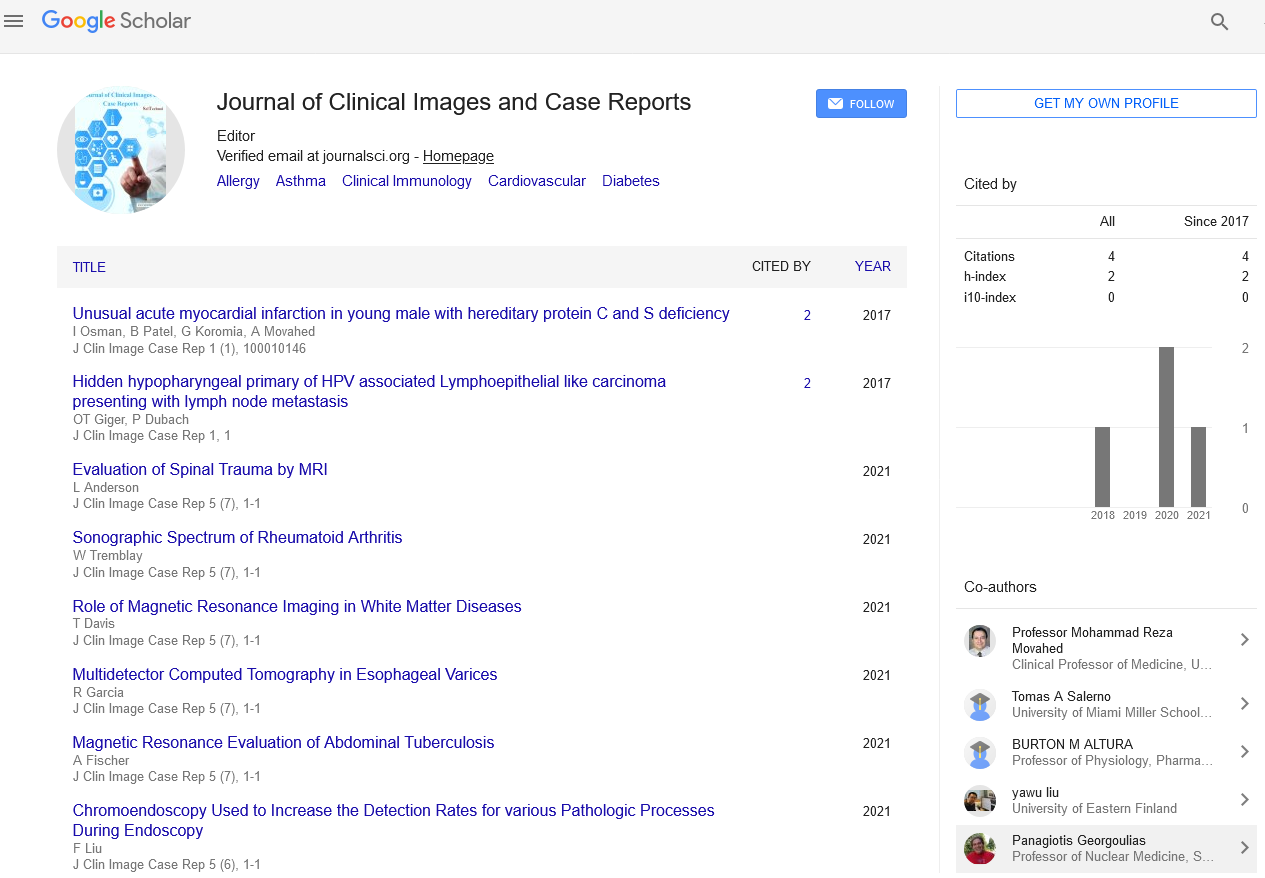Commentary, J Clin Image Case Rep Vol: 5 Issue: 5
Breast Elastography: A Diagnostic Breast Imaging
Pucha Jiang
Department of Neurosurgery, Zhongnan Hospital of Wuhan University, No. 169, Donghu Road, Wuhan, Hubei Province, 430000, China
*Corresponding author: Pucha Jiang, Department of Neurosurgery, Zhongnan Hospital of Wuhan University, No. 169, Donghu Road, Wuhan, Hubei Province, 430000, China, E-mail: pjiang@qq.com
Citation: Jiang P (2021) Breast Elastography: A Diagnostic Breast Imaging JClin Image Case Rep 5(5): 162
Received: May 08, 2021 Accepted: May 22, 2021 Published: May 29, 2021
Keywords: Breast elastography, Breast lesions, Sonoelastography
Introduction
Achalasia is Associate in Nursing passage motor disorder.The breast cancer is the most commonly diagnosed cancer and the leading cause of cancer death among women worldwide. Breast cancer is responsible for 25% of all cancer cases and 15% of all cancer deaths among women. The first clinical study demonstrating the utility of elastography in the identification and characterization of breast lesions was conducted in 1997. In 2003, the first practical diagnostic equipment was introduced. Breast ultrasound elastography is a new sonographic imaging technique that, in addition to traditional ultrasonography (US) and mammography, provides information on breast lesions. Ultrasound elastography is a non-invasive method of determining a lesion's "stiffness." In the separation of benign from malignant solid breast masses, ultrasound elastography has 86.5 percent sensitivity, 89.8% precision, and 88.3 percent diagnostic accuracy. Using a classification model based on criteria such as lesion form, orientation, margin, echogenicity, and acoustic transmission".
The Basics of Ultrasound Elastography
Elasticity is the ability of a material to bend when exposed to an external force and then return to its original shape or size when the force is removed. Different tissues are supposed to react differently depending on their particular ela:stic modulus [1]. SIize of Nodule: Due to a desmoplastic response of tumours, hard lesions with reduced elasticity appear larger on elastography than on B-mode ultrasound. The disparity in lesion size between elastographic and B-mode ultrasound imaging is used to articulate this variation. When the ratio reaches a certain threshold, malignancy is considered.Stifness of nodule: Various stiffness requirements for nodules have been suggested based on the extent and distribution of irregular tissue. Lesions that are malignant are more difficult to treat than benign lesions.
Ultrasound Elastography
Static and dynamic ultrasound elastography are two types of ultrasound elastographic techniques that have been developed based on the types of force applied [2]. Dynamic ultrasound elastography is divided into shear wave and acoustic radiation force impulse imaging, while static ultrasound elastography involves strain imaging
Strain Ultrasound Elastography
Tissue shifts en route with the propagation of ultrasonographic waves in strain ultrasonographic elastography. Mechanical compression, such as compression with an ultrasound transducer, manual longitudinal compression, or respiratory movements, is the most widely used process. It is obtained by measuring the difference in radiofrequency of the ultrasound beam before and after compression and only provides a qualitative measure of tissue deformation [3]. 16 The force of the compression exerted is proportional to the absolute value of the deformation along the longitudinal axis.
Strain Ultrasound Elastography
Increase in Diagnostic Confidence
B-mode ultrasound findings and BI-RADS categorization of breast lesions are influenced by positive or negative ultrasound elastographic results. This leads to a higher degree of diagnostic faith in classifying lesions as benign or malignant, resulting in more timely and reliable diagnosis.
Conclusion
When paired with B-mode ultrasound findings, breast ultrasound elastography is a useful imaging modality that increases precision and sensitivity in diagnosing various breast lesions. While ultrasound elastography is simple to perform, proper technical knowledge and analysis ofthe results are criticalfor management.
 Spanish
Spanish  Chinese
Chinese  Russian
Russian  German
German  French
French  Japanese
Japanese  Portuguese
Portuguese  Hindi
Hindi 